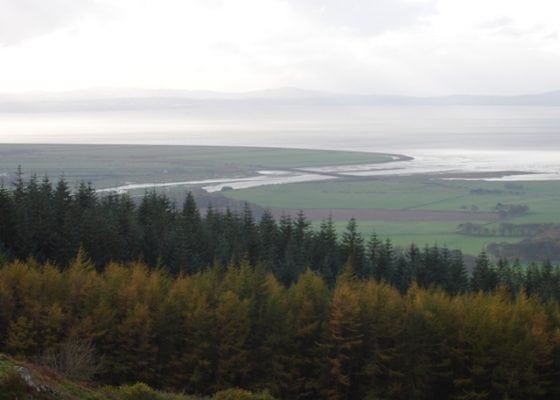- Created: August 28, 2012 10:32 am
- Updated: December 12, 2017 11:02 am
Categories:
Location: Derry
- Distance Instructions
Label
- Distance 0 m
- Time 0 s
- Speed 0.0 km/h
- Min altitude 0 m
- Peak 0 m
- Climb 0 m
- Descent 0 m
From a distance, the mud flats of the Roe Estuary exposed at low tide appear dull and lifeless - but underneath they hide a secret. Concealed by the mud are vast numbers of small seashore animals such as lugworms, shrimps, ragworms and periwinkles. There are also large beds of mussels and extensive areas covered in a plant known as eel-grass.
All these are the food sources that act as a magnet for many of the thousands of migrating waders, ducks, swans and geese that stop over on Lough Foyle each winter.
All these are the food sources that act as a magnet for many of the thousands of migrating waders, ducks, swans and geese that stop over on Lough Foyle each winter.
Inside the railway bridge is an area of salt marsh vegetation - a habitat not common locally. Here you can watch the lapwing's aerobatic display in early summer, or hear the plaintive cry of the curlew on a misty autumn morning. If you're lucky, you might catch a glimpse of an otter hunting crabs in the shallow pools. Around high tide, good views of the birds can be had from the car park without causing too much disturbance to the flocks. Crossing either the railway line or bridge is not permitted.
Please note, there are no formal paths and soft mud on the shore can be dangerous.
Contact the Site manager: Tel. 028 7776 3982
From DOE
Gallery
From a distance, the mud flats of the Roe Estuary exposed at low tide appear dull and lifeless – but underneath they hide a secret. Concealed by the mud are vast numbers of small seashore animals such as lugworms, shrimps, ragworms and periwinkles. There are also large beds of mussels and extensive areas covered in a plant known as eel-grass.
All these are the food sources that act as a magnet for many of the thousands of migrating waders, ducks, swans and geese that stop over on Lough Foyle each winter.
All these are the food sources that act as a magnet for many of the thousands of migrating waders, ducks, swans and geese that stop over on Lough Foyle each winter.
Inside the railway bridge is an area of salt marsh vegetation – a habitat not common locally. Here you can watch the lapwing’s aerobatic display in early summer, or hear the plaintive cry of the curlew on a misty autumn morning. If you’re lucky, you might catch a glimpse of an otter hunting crabs in the shallow pools. Around high tide, good views of the birds can be had from the car park without causing too much disturbance to the flocks. Crossing either the railway line or bridge is not permitted.
Please note, there are no formal paths and soft mud on the shore can be dangerous.
Contact the Site manager: Tel. 028 7776 3982
From DOE


